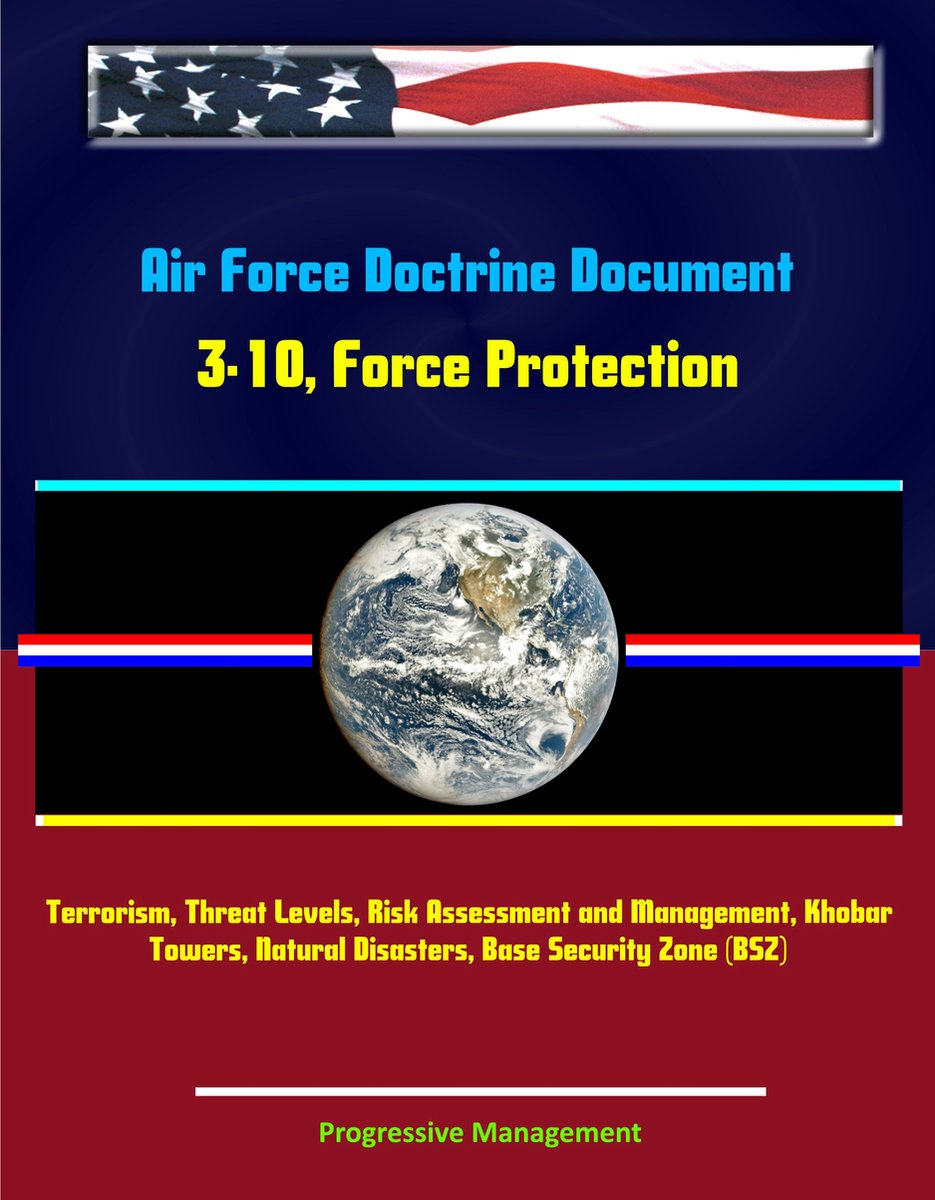Air Force Doctrine Document 3-10, Force Protection - Terrorism, Threat Levels, Risk Assessment and Management, Khobar Towers, Natural Disasters, Base Security Zone (BSZ)
Air Force Doctrine Document (AFDD) 3-10, Force Protection, is the Air Force's operational level doctrinal publication on force protection. Force protection supports the core function of Agile Combat Support, and its supporting capability of "Protect the Force." Protecting Air Force personnel and resources is critical to the Service's ability to perform its mission. Chapter 1, Force Protection Fundamentals, defines force protection for the Air Force and describes how the Air Force views force protection as compared to the multinational and joint views. It describes the basic features of force protection and provides a description of the military challenges faced by commanders and Airmen responsible for force protection, the unique perspective they provide, and general procedures that guide their actions. Chapter 2, Command Responsibilities for Force Protection, describes command relationships when addressing force protection concerns and illustrates how Air Force forces are presented to a joint force commander as part of the commander of Air Force forces' air and space expeditionary task force. Chapter 3, Threats and Hazards to the Air Force Mission, describes the many threats and hazards faced by Air Force personnel and identifies the various levels of threat that exist throughout the range of military operations. It further discusses Department of Defense terrorism threat levels assessed by the Defense Intelligence Agency as well as force protection conditions as used by geographic combatant commanders. It provides a discussion of threat objectives and hazard effects. Chapter 4, Force Protection Planning, introduces risk management as a process to assist decision makers in reducing or offsetting risks. It gives an overview of the process; identifies the goals, key aspects, and principle concepts of the process; and provides general guidelines for applying the process. Chapter 5, The Force Protection Community, discusses the concepts of integrated defense, emergency management, the critical infrastructure program, and force protection effects.
- Ean/ISBN: 9781476399805
- Review:
